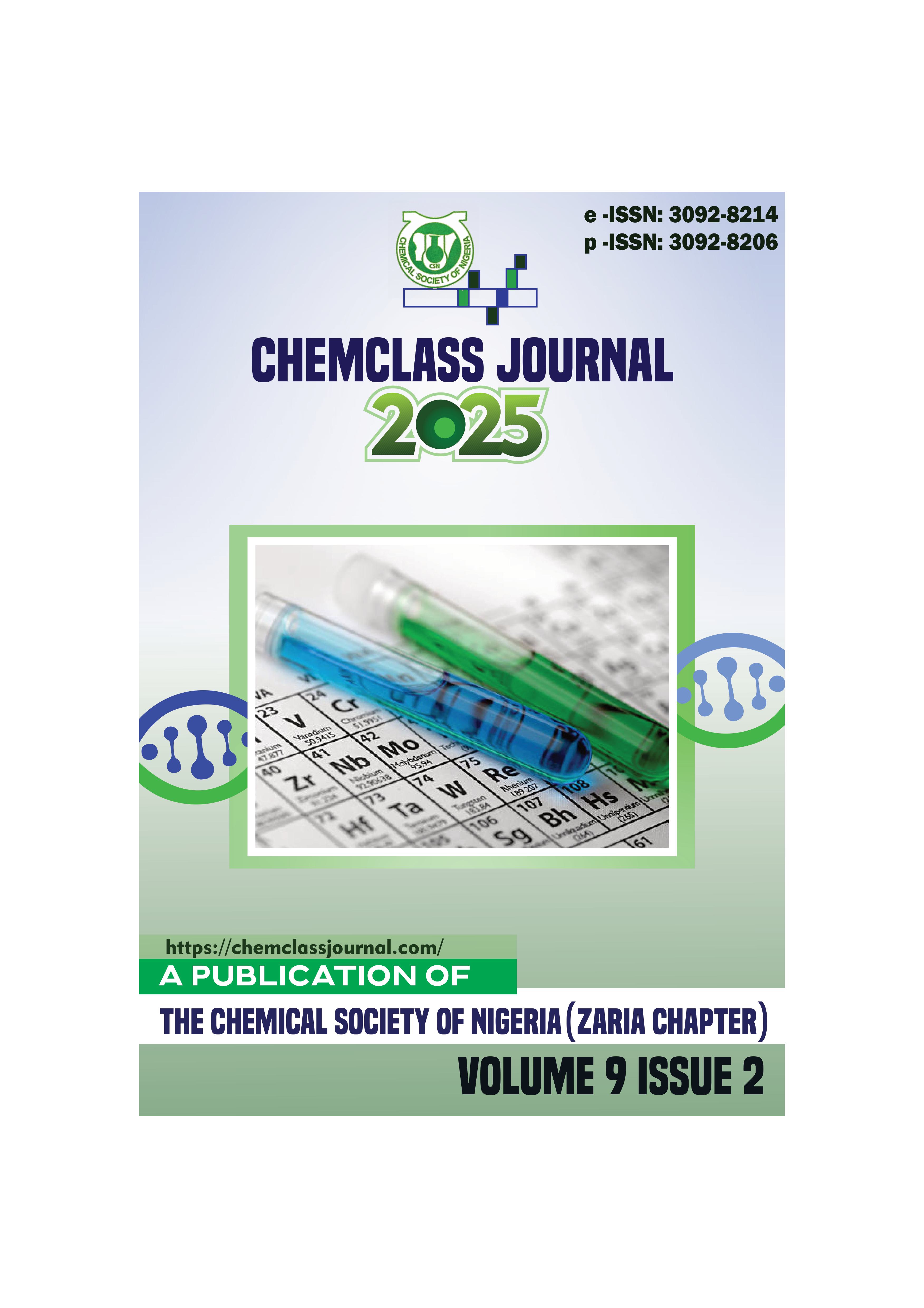Synthesis, Characterization and Biological Profiles of Schiff Base Derived from Benzaladehyde and Phenylalanine and M3+ Complexes using Conventional Method
DOI:
https://doi.org/10.33003/chemclas-2025-0902/181Keywords:
Antimicrobial , Benzaldehyde , Characterization , Ligand , PhenylalanineAbstract
Schiff base ligand was synthesized by a condensation reaction between Benzaldehyde and Phenylalanine,
using solid state method. The reaction was done in the ratio of 1:1 Metal : Schiff base. The Solid state
method produced yield of ranges from 74-93%, and the complexes were found to have low molar
conductance (4.30-15.20 Ω-1cm-2) and the Schiff base have higher melting point than the metal complexes
indicating higher stability. The ligand and its metal complexes were characterized by Fourier Transform
Infrared Spectroscopy (FT-IR), Ultraviolet-Visible Spectroscopy (UV-Vis), X-Ray Diffraction (XRD) and
Thermogravimetric Analysis (TGA). Spectral results which had Ligand-Cr(III) (1639 cm-1), ligand-Fe(III)
(1618 cm-1) and ligand -Co(III) (1685 cm-1) revealed complexation arising from the Nitrogen of the
azomethine group, Crystallographic pattern exhibited broader and less intense peaks which indicates
reduced crystallinity and potentially smaller crystalline sizes. The thermal behaviour of the ligand and its
metal complexes was studied at different temperatures. The Schiff base showed weight loss around 200°C
and began decomposition at a slightly higher temperature (~302°C) and a two-step process. Antimicrobial
activity was also observed with Schiff base and its M3+ Complexes on two bacterial and two fungal species.
The Schiff base showed activity on Escherichia coli and Candida albica, while M3+ Complexes showed
activity against bacteria and Candida albica but no effect on Mucor specie. In conclusion, the solid-state
method offers more advantages including more convenience, higher yield, shorter reaction time, milder
conditions, no pollution generation, and safer analyst experience.





 ChemClass Journal
ChemClass Journal
